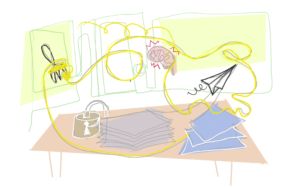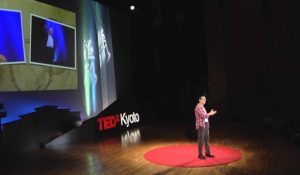The Documentation Era
This has a lot to do with miscommunication, but it deserves a category of its own due to its magnitude and the dysfunctional way it was built into daily clinical practices. Everyone knows how important eye contact is when communicating with others, and some of us were lucky enough to learn in Med School how important it’s to talk to your patients without putting barriers between you and them, including physical ones like a nice big wooden desk. Nowadays, doctors do exchange good and constant eye contact, but with the computer screen. They are often busy typing and clicking while asking the patient for very important and sensitive information, and the poor patient gets only the side profile of the doctor’s face. This shows how much respect is lost nowadays between clinicians on one side, and patients and their families on another side, and the subsequent loss of any trust and rapport left, which is the first essential step of any healing process.
It’s commonly said that if something was not documented, it’s not done. The reason behind pushing vigorously towards it is an attempt to make sure that necessary information are available and accessible anytime, for better continuum of care, safety, and for medico-legal purposes. It’s clear that healthcare systems have taken the wrong turn on this and lost the essence of the whole value of documentation, to the point that it has become one of the main reasons for broken systems, self-created medical errors, and “bad” patient experiences.
Studies have shown that the national average of nursing time spend at the bedside providing direct care to the patients in the US is less than 50%. Most of the time is spent doing things that add no direct value to the patient, including documentation. If you have the chance to observe a nurse in an inpatient unit for an extended length of time (the time you are waiting for your doctor, maybe!), you could see the huge amount of time wasted, not in delivering medications, not in assessing patients, not discussing cases or responding to patient and family needs, but in handwriting, typing, punching and stapling, filing and shelving like a good clerk, and getting papers signed or stamped. Nurses who are supposed to be closer to patients more than any healthcare professional have turned into administrative assistants in the name of “documenting” evidence of care, or non-care in this case, and the only touch time with patients in one day can be as much as 30 minutes in total!
Although it is necessary, documentation is currently redundant, disorganized and has become an issue that everyone complains of.
One of the reasons is the requirement of some regulatory and accrediting bodies requiring all sorts of information to be documented in a certain way or format, and in the absence of creative and versatile care systems, or well-educated and smart health informatics professionals, providers have no choice but to comply in the exact way. As a healthcare provider who signed up for this noble cause, If you had to choose between the two, appropriate care or proper full documentation, which one would you opt for? Unfortunately, this is the state where we have reached nowadays without proper balance between the two.
A major issue is in the design and management of popular information systems in the market, is that many were not co-developed with healthcare professionals, never studied carefully at actual care process, and only focused on what the doctor or nurse needs to view on the patient record. Even after incorporating all the requirements in a nice looking system, it turns out to be unfriendly and hard to navigate. On the other hand side, IT professionals managing and maintaining those systems inside a hospital unfortunately have no clue about the impact of adding one module after another on the care process, and don’t really bother to rethink and integrate documentation requirements when they arise, causing inflation of data in an already broken system..
to be continued…




